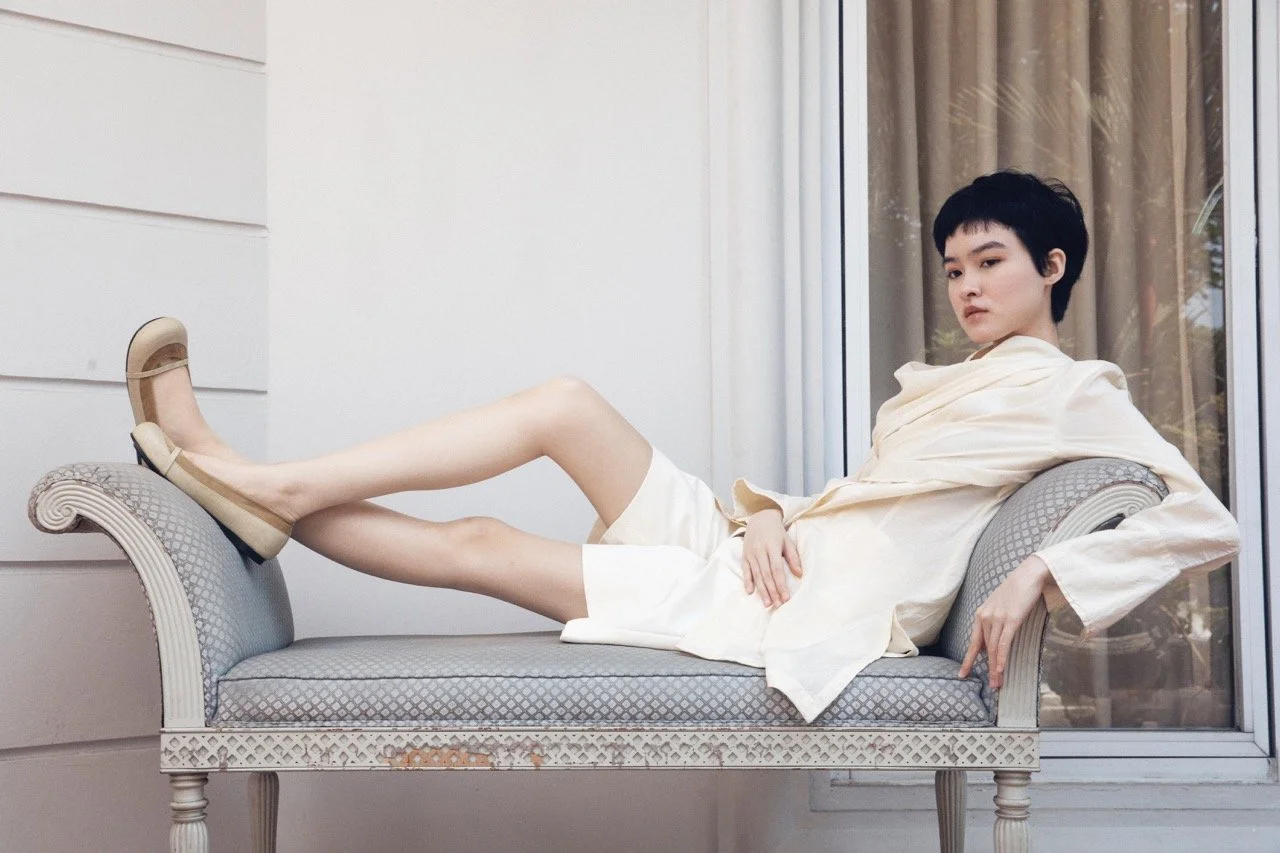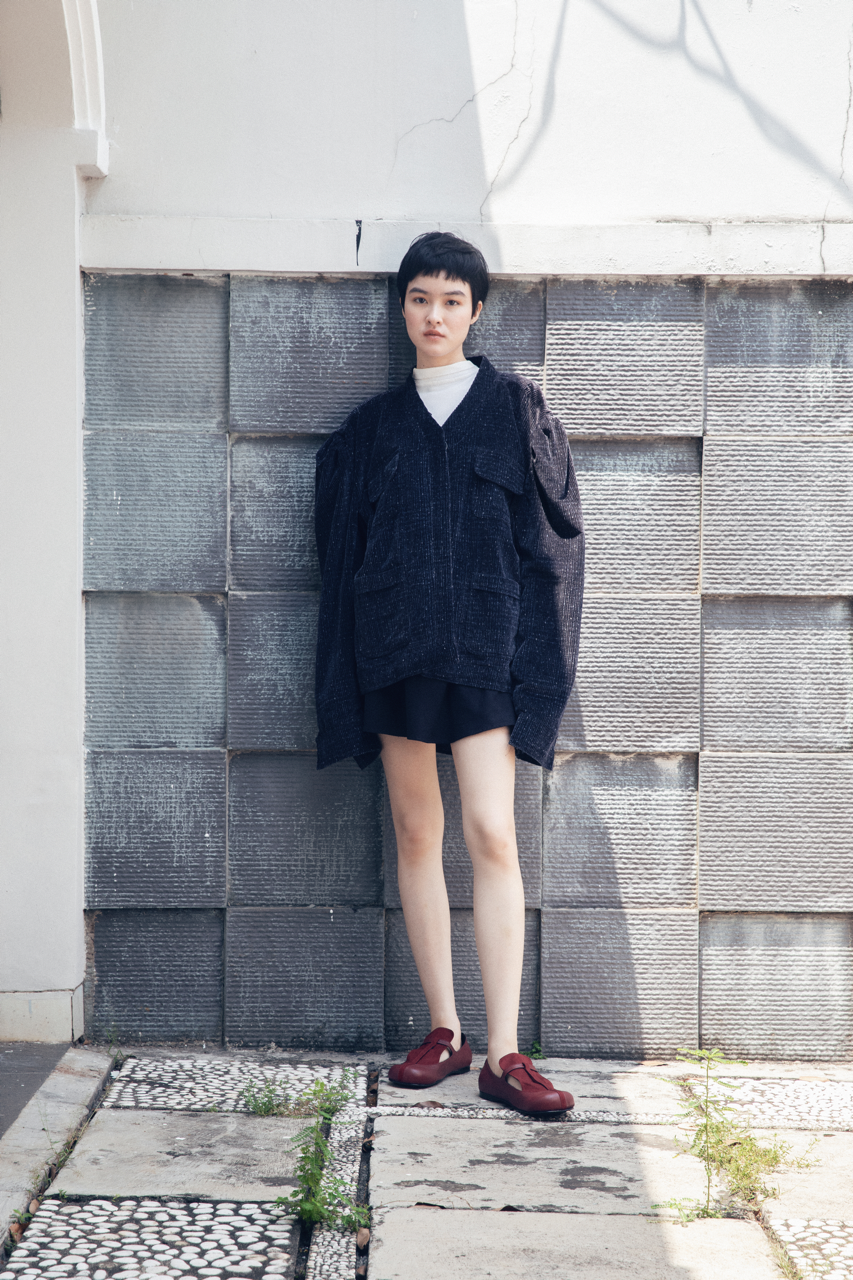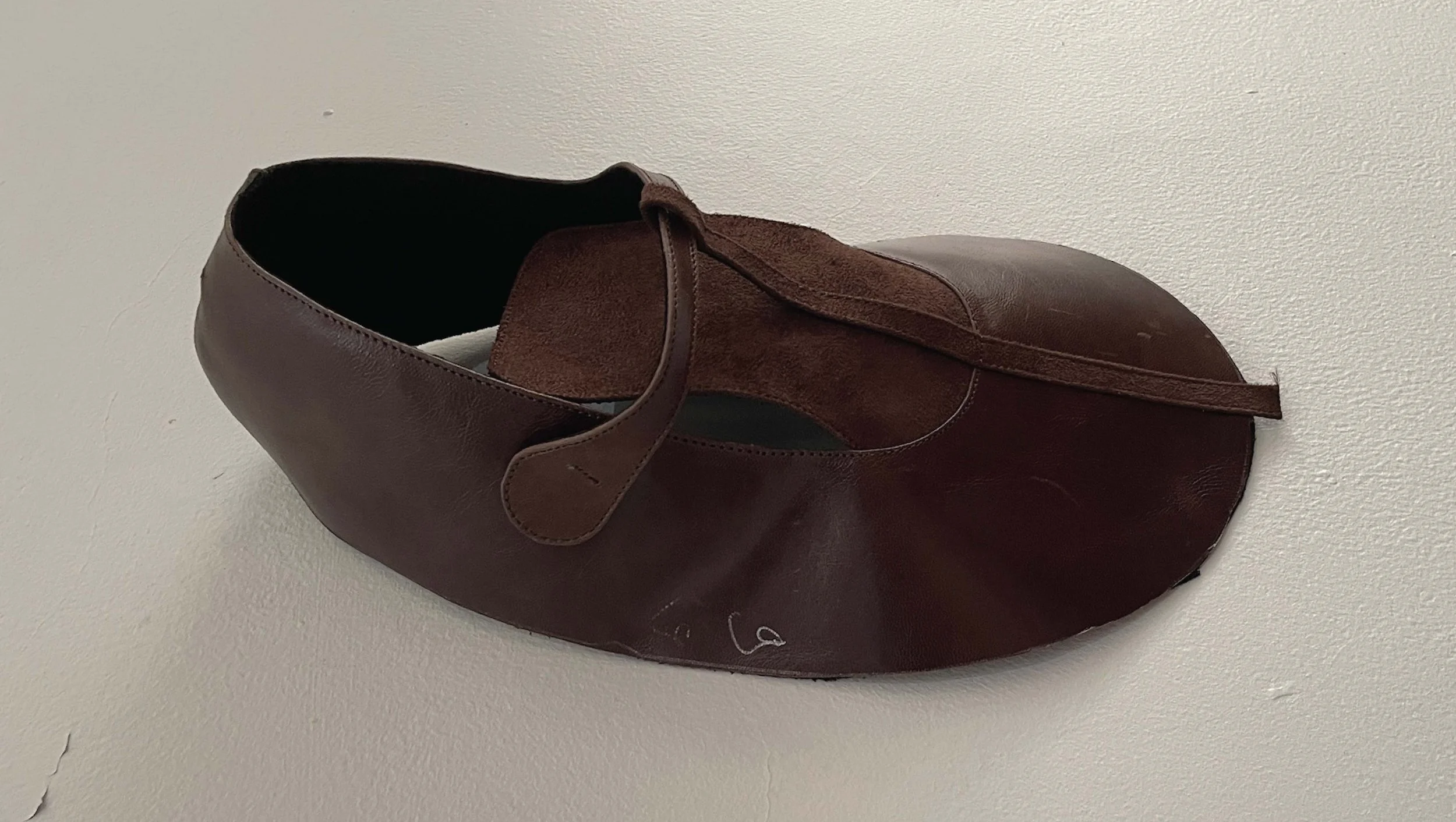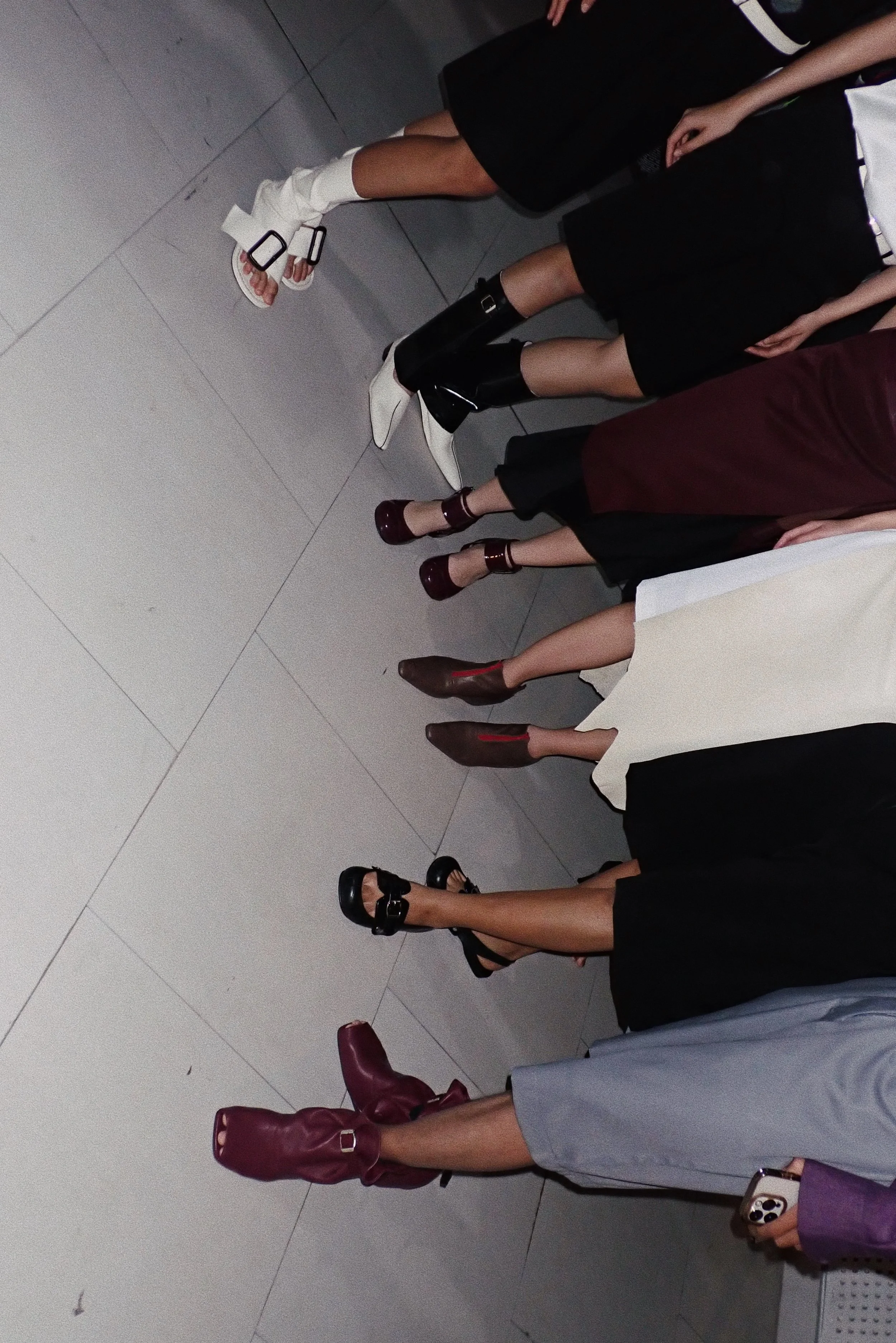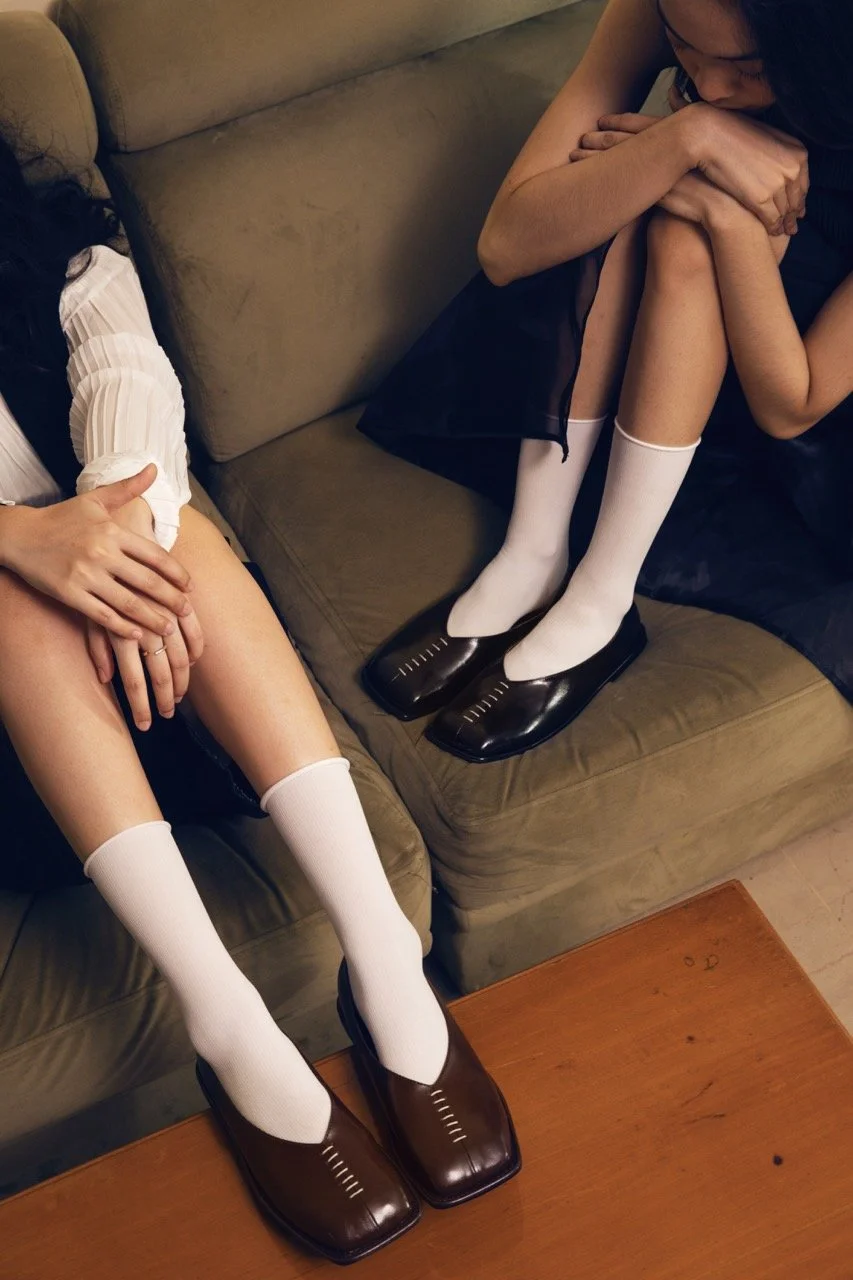Fresh Face: MTW
Shaza Hafediza and Alyssa Ramadhani on footwear driven by craftsmanship
F&M’s Fresh Face is a series featuring young Southeast Asian fashion practitioners, where we speak with them about how they embarked on their careers and what propels them as creatives.
When Shaza Hafediza and Alyssa Ramadhani launched MTW in 2021, their goal was refreshingly simple: to make shoes they genuinely wanted to wear, balancing curiosity, craftsmanship, and function. Working from Jakarta, the duo developed a design language defined by clean lines, thoughtful materiality, and a timeless charm that quickly resonated with the city’s fashion buffs.
From early prototypes and small-batch pre-orders to showcases at regional markets such as Brightspot and Public Garden and more recently a debut runway presentation at Jakarta Fashion Week 2025, MTW has steadily grown its footprint across Southeast Asia. The brand reflects a growing appetite for thoughtful, design-led footwear from independent brands unafraid to show their unique identity.
Shaza Hafediza and Alyssa Ramadhani, founders of MTW. Image courtesy of MTW.
Hi Alyssa and Shaza! To start off, could you tell us a bit about your backgrounds and how you two came together to create MTW?
Alyssa: We both studied branding at university and were often in the same classes and project groups. Over the years, we tried a few small businesses together. Even after graduating, while working our day jobs, we talked about starting a side project. Then, during the pandemic, we saw the perfect opportunity to finally make it happen. We have been interested in fashion in general, so launching MTW in 2020 felt like a natural next step.
Reflecting on the early days of MTW, what were the defining influences or inspirations that helped form the foundation of the brand?
Shaza: Alyssa, or Dolly, as I call her, already had a strong interest in footwear, and the idea originally came from her. As we discussed it further, we realised we wanted to create something that we would both wear and genuinely love. From there, we dove into researching past footwear, looking at everything from silhouettes to construction to function. This research shaped the direction of MTW through classic, timeless designs that are intentionally made to last.
Campaign shoot for ‘mome’ collection, 2024. Photo by Hilarius Jason. Image courtesy of MTW.
Campaign shoot for ‘mome’ collection, 2024. Photo by Hilarius Jason. Image courtesy of MTW.
What is your dynamic like when working together? How do you complement each other’s strength?
Shaza: We have been working together since university, so our process is quite seamless. We understand each other’s areas of expertise, but we always consult one another when making decisions. Dolly tends to lead on partnerships and marketing, while I focus more on visuals and design. We are constantly exchanging ideas and feedback, so it is very collaborative.
Can you walk us through the creative and technical process behind designing your collections?
Shaza: We are both deeply involved in the design process. It usually starts with brainstorming, deciding on the model, silhouette, colors, and overall concept. Once we are aligned, we move into prototyping and sampling, which takes the most time. Often, the designs we envision do not translate perfectly at first, so there is a lot of testing and refining. Because of this, we typically release only one collection a year, along with maybe one collaboration, since the research and development process is quite extensive.
Alyssa: From the initial design to the final mock-up, it can take up to a year, or even a year and a half, because we want to make sure that every product we release is something we are truly confident in.
Prototype for ‘mome’, 2024. Image courtesy of MTW.
Prototype for ‘mome’, 2024. Image courtesy of MTW.
Over the years, you have collaborated with local brands and retailers like AKSU, The Good Things in Life, and Laurencia Irena. What have been some of the key highlights from these collaborations, and how have they influenced MTW’s direction?
Alyssa: Since we are all small, independent brands, there is a shared mindset of wanting to grow and learn together. Our collaborations are stimulating because we aim to find a middle ground where the final product truly represents both brands. It is not about forcing the styles together, but about exploring design and materials that reflect each of us. For example, we used a lot of fluffy fabric in the collaboration with The Good Things in Life, and for Laurencia Irena, we experimented with embroidery. These partnerships push us to try new techniques and expand our creative approach.
Campaign shoot for MTW x Laurencia Irena collection, 2023. Photo by Iona Chavela. Image courtesy of MTW.
Let’s talk about your collection for Jakarta Fashion Week (JFW) last year. The collection featured mules, boots, ankle boots, loafers, and sandals, all designed for multiple styling. What was your approach behind designing this particular collection?
Alyssa: We joined JFW under Fashion Force, and since it was our first fashion show, we wanted to present something that truly represented MTW. That’s why we showcased a variety of footwear—mules, boots, ankle boots, sandals—all reflected through our style.
As we dug into our research and the history of footwear, we discovered some fascinating insights. For example, in 1820s Europe, ankle boots for women often had thin soles because they were mostly used indoors. Shoemakers would sometimes add a detachable base, similar to a sandal, for outdoor use. Or, they would design platform heels that could be attached beneath the high heels, allowing women to walk through puddles without their dresses getting dirty. These functional innovations inspired us to create a collection where each piece could be styled in multiple ways.
Shaza: Applying it to today, we can see how people can get bored with a single style. That is why we made all the pieces with dual styling options; like the mules with detachable boots, so you can switch between a more formal or minimalist look depending on your style or the occasion. The real challenge was translating that versatility onto the runway, so we decided to make it part of the choreography, with the models switching styles mid-show on the stage.
Alyssa: There were a lot of other components that we had to consider outside of our regular campaigns, from music, visuals, wardrobe. We collaborated with a lot of our creative friends and took the time to discuss what best expressed MTW’s personality on stage.
Campaign shoot for Jakarta Fashion Week 2025 collection. Photo by Julius Juan Justianto.
Backstage at Jakarta Fashion Week 2025. Images courtesy of MTW.
With MTW’s loyal following in Jakarta and increasing attention from the wider region, how do you maintain the intimacy of a local brand while managing the challenges of scaling and broader visibility?
Alyssa: We started MTW as a side project, but over time, the response, demand and our own passion for it kept growing. We both realised that if we were not fully committed, it would be difficult to move forward the way we want to. Still, our idea of growth is not about expanding quickly or moving into mass production. What matters to us is preserving the original intention behind the brand and to stay involved in every part of the creative and production process. Most of our shoes are still handmade by our team, and we know that scaling up would inevitably require some compromises. So instead, we take things one step at a time, focusing on a specific area of growth each year, without rushing the process.
Shaza: For the past four years, our ready stock has been intentionally limited. We also try to educate our customers about that, and how each pair is handmade and takes time to produce. This sense of intimacy and connection is definitely something that we try to maintain even while we grow the brand.
Campaign shoot for ‘pompes’ collection, 2023. Photo by Hilarius Jason. Image courtesy of MTW.
You have also participated in overseas pop-ups, like Public Garden in Singapore. What are your thoughts on the Southeast Asian fashion scene, especially for small, independent brands like MTW?
Shaza: We started out wanting to make something we personally liked, without thinking too much about how it would fit into a larger scene. We definitely did not expect it to grow into what it is now, but we are grateful for the way people have embraced MTW.
Alyssa: The customer base across Southeast Asia has grown so much online, and we wanted to experience firsthand what the market in Singapore was like. I think people are becoming more open to discovering local brands from other countries because they offer something fresh and different from what is available at home. There is also a genuine curiosity about the story behind each product, and visitors would often talk to us about the process, the craftsmanship, and the little details. I have noticed more independent brands becoming bolder, creating pieces that reflect their identity and where they come from, partly because the market is now more receptive to that kind of individuality.
I have noticed more independent brands becoming bolder, creating pieces that reflect their identity and where they come from, partly because the market is now more receptive to that kind of individuality.
MTW Pop-up at Space9, Row0 in Blok M, featuring the Jakarta Fashion Week collection. Image courtesy of MTW.
Looking ahead, are there any new materials, design techniques, or silhouettes you are excited to experiment with in future collections?
Shaza: There is still so much we want to try. We are curious about new materials and production methods, and that is something we consistently experiment with. Whenever we work on a new collection, we start by creating a bunch of design ideas, then narrow them down to the final designs. The ones that do notmake it this time around, we usually continue the research and development process and we will revisit and tweak them for another piece or collection.
Finally, what is next for MTW?
Alyssa: We are launching a new collection at the end of this month at Brightspot. We have been experimenting with silhouettes, shapes, and materials in ways that feel quite new for us, but we cannot share too much just yet!
Shaza: At first glance, the pieces might look simple, but there is actually a lot of complexity in how they are put together. The assembling process took some time, and the materials also required a lot of consideration and experimentation. There are three new pieces in total, which we will also be launching online after their debut at Brightspot.


